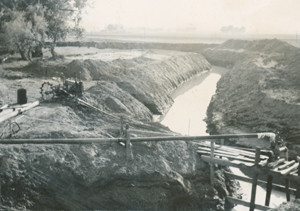
Residents of the Cache la Poudre River Valley have been diverting water from the river for more than 150 years, and they have been transferring and litigating rights to use that water the entire time. Colorado’s prior appropriation laws, established in the 1860s, produced a legal framework that both facilitated and complicated transfers between agricultural, municipal, and industrial users. Agricultural users in the region were the first to claim water and dig ditches that moved water away from the Cache la Poudre River to irrigate their crops, but industrialists and town boosters followed closely behind. Soon, ditches and water structures snaked through Larimer County, and the valley’s inhabitants had over-appropriated the river. However, the population of Fort Collins and other towns dependent on river continued to grow. Transbasin diversions added water to the river several times in the nineteenth and twentieth centuries but still failed to satisfy demand, so individuals, towns, and companies had to purchase and transfer rights from other water users. When the population of Fort Collins ballooned after World War II, urban entities found ways to purchase larger shares of water from farmers, but they also ran into stiffer competition from an increasing number of groups who held disparate ideas about how the Cache la Poudre River’s resources should be used.